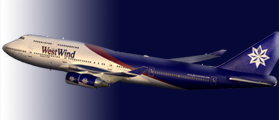

Advanced Pilot Programs - FS Techniques: Recovering from a Bad Attitude
Approved By
John Condon - Chief Pilot & Chief Administrative Officer
Last Updated: March 14th 2006
PART 1: RECOVERING FROM A BAD ATTITUDE
When an aircraft gets into a bank of over 45 degrees, an unusual attitude can be experienced and causes a nose-high attitude with decreasing airspeed, or a nose-low attitude with increasing airspeed. They usually are caused when you aren’t paying very close attention to Flight Simulator. Unusual attitudes occur during both IMC (Instrument Meteorological Conditions) and VMC (Visual Meteorological Conditions), but are much harder to correct during IMC.
Practicing flying at unusual attitudes can improve your reaction time when making movements that will overstress the aircraft. Activate aircraft receives damage from stress option to accurately gauge how well you handle the aircraft.
The following procedures can help you tackle unusual attitudes. If the nose is low and your airspeed is rapidly increasing, you should reduce the power, level the wings, apply speedbrakes (if your airliner has them) and smoothly raise the nose. Don’t try to level the nose before leveling the wings. Otherwise, you could quickly overstress the aircraft. After you get the aircraft under control, recover to cruise flight by adding power retracting the speedbrakes and climbing back to your original altitude. If you are trying this partial panel, use the TC to level the wings.
Lets say you’ve put the aircraft in a steep left descending turn. First press F1, or cut the throttle on your yoke to reduce the power. Next use keyboard 5 to center the wings, or simply maintain yoke forward and straight, without turning left or right. Once the wings are level, use your keyboard, joystick or yoke to raise the nose to level flight and transition back to flight level.
Conversely, lets say the aircraft is nose-high and the airspeed is rapidly decreasing. You should add full power, F4 and roll (bank) the airliner 30 degree to avoid a stall. Next level the wings keyboard 5 and recover back to straight and level flight. The airliner is rolled (banked) to avoid passengers from being thrown to the roof of the airliner when recovering from this unusual attitude.
Test Yourself - Q&A for Bad Attitude
Answers:
1-B
2-D
3-C
4-C
5-B
6-C
7-B
8-B
9-B
10-D
Take care,
John Condon
Chief Administration Officer
Chief Pilot,
Head Of Training
NOT TO BE USED IN REAL WORLD FLIGHT. NO PARTS OF THIS ARTICLE MAY BE REPRINTED WITHOUT THE WRITTEN PERMISSION OF THE AUTHOR.